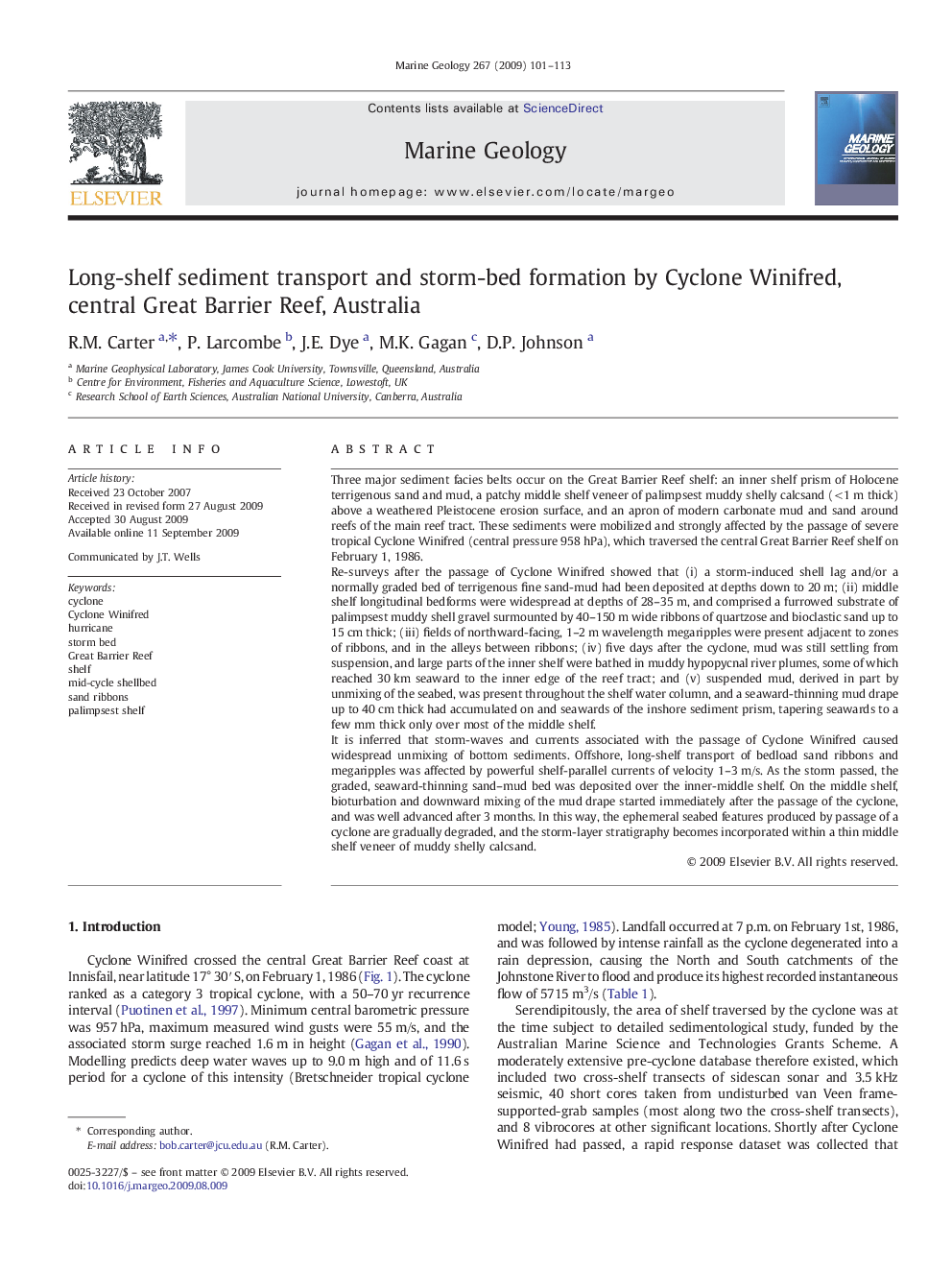| کد مقاله | کد نشریه | سال انتشار | مقاله انگلیسی | نسخه تمام متن |
|---|---|---|---|---|
| 4719026 | 1639156 | 2009 | 13 صفحه PDF | دانلود رایگان |

Three major sediment facies belts occur on the Great Barrier Reef shelf: an inner shelf prism of Holocene terrigenous sand and mud, a patchy middle shelf veneer of palimpsest muddy shelly calcsand (< 1 m thick) above a weathered Pleistocene erosion surface, and an apron of modern carbonate mud and sand around reefs of the main reef tract. These sediments were mobilized and strongly affected by the passage of severe tropical Cyclone Winifred (central pressure 958 hPa), which traversed the central Great Barrier Reef shelf on February 1, 1986.Re-surveys after the passage of Cyclone Winifred showed that (i) a storm-induced shell lag and/or a normally graded bed of terrigenous fine sand-mud had been deposited at depths down to 20 m; (ii) middle shelf longitudinal bedforms were widespread at depths of 28–35 m, and comprised a furrowed substrate of palimpsest muddy shell gravel surmounted by 40–150 m wide ribbons of quartzose and bioclastic sand up to 15 cm thick; (iii) fields of northward-facing, 1–2 m wavelength megaripples were present adjacent to zones of ribbons, and in the alleys between ribbons; (iv) five days after the cyclone, mud was still settling from suspension, and large parts of the inner shelf were bathed in muddy hypopycnal river plumes, some of which reached 30 km seaward to the inner edge of the reef tract; and (v) suspended mud, derived in part by unmixing of the seabed, was present throughout the shelf water column, and a seaward-thinning mud drape up to 40 cm thick had accumulated on and seawards of the inshore sediment prism, tapering seawards to a few mm thick only over most of the middle shelf.It is inferred that storm-waves and currents associated with the passage of Cyclone Winifred caused widespread unmixing of bottom sediments. Offshore, long-shelf transport of bedload sand ribbons and megaripples was affected by powerful shelf-parallel currents of velocity 1–3 m/s. As the storm passed, the graded, seaward-thinning sand–mud bed was deposited over the inner-middle shelf. On the middle shelf, bioturbation and downward mixing of the mud drape started immediately after the passage of the cyclone, and was well advanced after 3 months. In this way, the ephemeral seabed features produced by passage of a cyclone are gradually degraded, and the storm-layer stratigraphy becomes incorporated within a thin middle shelf veneer of muddy shelly calcsand.
Journal: Marine Geology - Volume 267, Issues 3–4, 15 December 2009, Pages 101–113